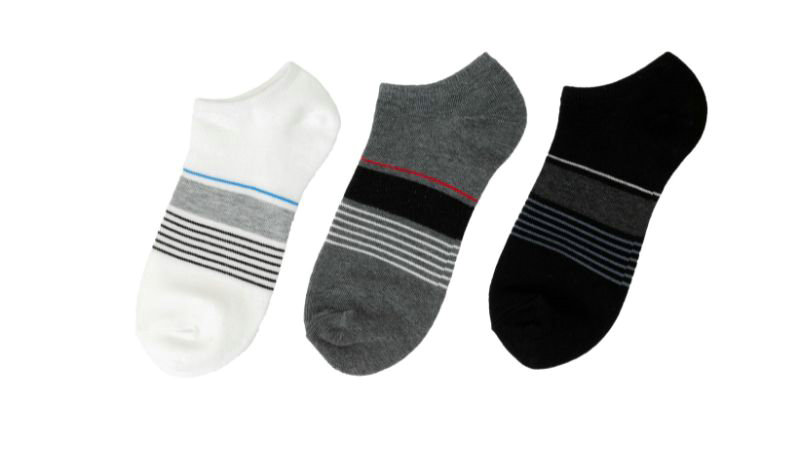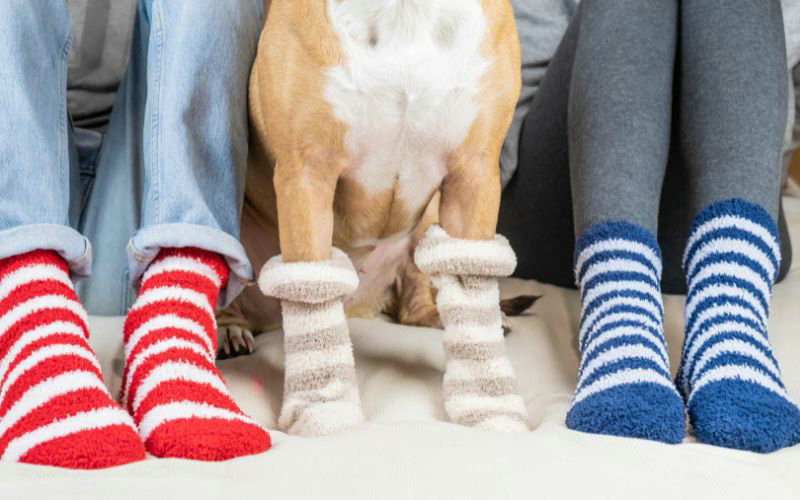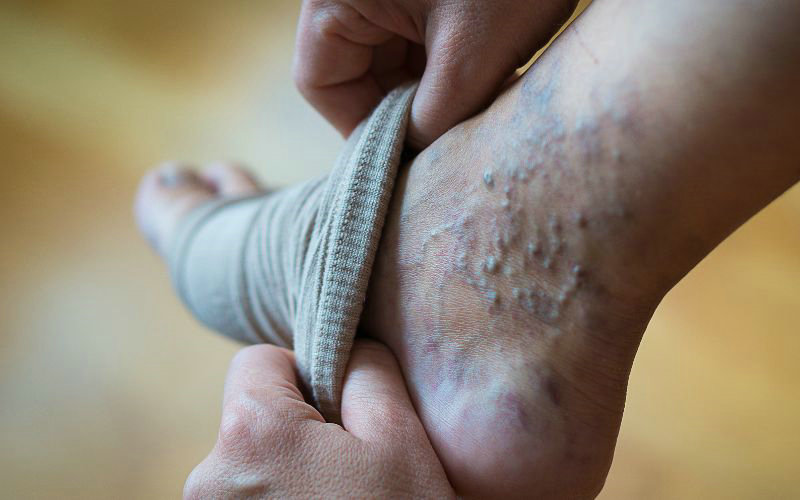
Key Takeaways
- Varicose Veins: You may develop varicose veins due to faulty valves in the veins, leading to blood pooling instead of moving effectively back to the heart.
- Mechanism of Action: Compression stockings exert graduated pressure on your legs, which can aid in improving blood circulation and supporting the vein valves.
- Compression Socks or Stockings Benefits:
- Enhance blood flow in the legs
- Reduce swelling in legs and ankles
- Help to prevent blood pooling in your veins
- May prevent the progression of varicose vein formation
- Types of Compression:
By Compression Level:
Mild (8-15 mmHg), Moderate (15-20 mmHg), Firm (20-30 mmHg), Strong (30-40+ mmHg)
By Length:
Ankle (invisible/no-show), Crew, Knee-high, Thigh-high, Waist-high
By Purpose:
Graduated compression, Anti-embolism, Support/lifestyle
It’s important for you to consult your healthcare provider to find the appropriate type and level of compression suitable for your situation. They can provide a prescription for medical-grade compression socks if necessary. Regular wearing of properly fitted compression stockings may help manage symptoms and improve your quality of life when dealing with varicose veins.
Understanding Varicose Veins and Compression Therapy
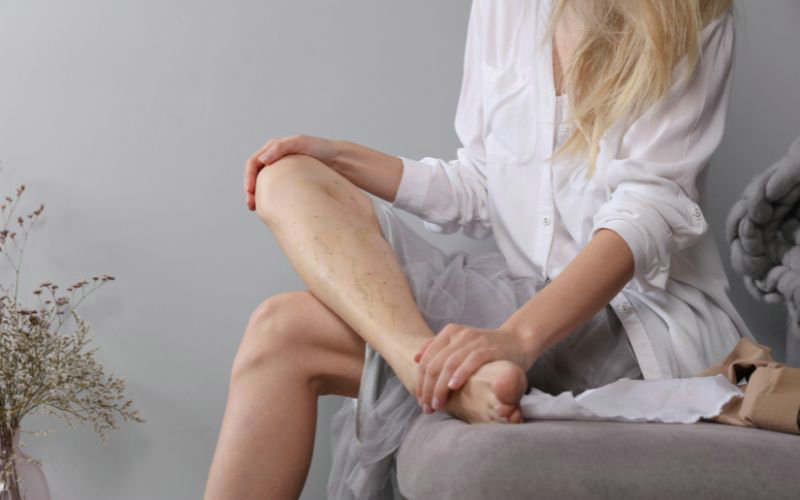
In addressing the discomfort of varicose veins, compression therapy with specially designed stockings plays a critical role. By improving blood flow and reducing pressure in your legs, you can experience relief from the symptoms of varicose veins.
What Are Varicose Veins?
Varicose veins are enlarged, twisted veins that often appear swollen and raised above the surface of your skin. They are typically blue or dark purple, and occur when faulty valves in the veins allow blood to flow in the wrong direction or to pool. The condition is primarily seen in the legs, where gravity makes it more challenging for blood to return to your heart.
How Compression Socks Work to Fight against Varicose Veins
Compression socks are designed to apply gentle pressure to your legs and ankles, promoting better blood circulation. There are different types of compression therapy, including knee-high and thigh-high stockings as well as compression sleeves.
- Graduated compression stockings, our most common recommendation, create maximum pressure at the ankle, which gradually decreases up the leg.
- Medical-grade compression socks are rated in millimeters of mercury (mmHg), which indicates the amount of pressure they apply. This gradient pressure can help to maintain normal blood flow, support your calf muscles, and prevent the backflow of blood that exacerbates varicose veins.
The Benefits of Compression Stockings for Varicose Veins
Wearing compression stockings regularly can lead to several benefits:
- Alleviation of discomfort: They can help minimize the pain and swelling associated with varicose veins.
- Prevention of worsening symptoms: By enhancing circulation and vein support, stockings may prevent varicose veins from becoming more severe.
- Support during daily activities: For those on their feet often, compression gear can reduce heaviness and aching in the legs.
- Post-surgery application: Compression stockings are often used after surgery to manage circulation and reduce the risk of clot formation.
Remember, selecting the right compression level and ensuring a proper fit are essential for the stockings to be effective. It’s advisable to consult with a healthcare provider to determine which type and level of compression are suitable for your needs.
Choosing the Right Compression Socks
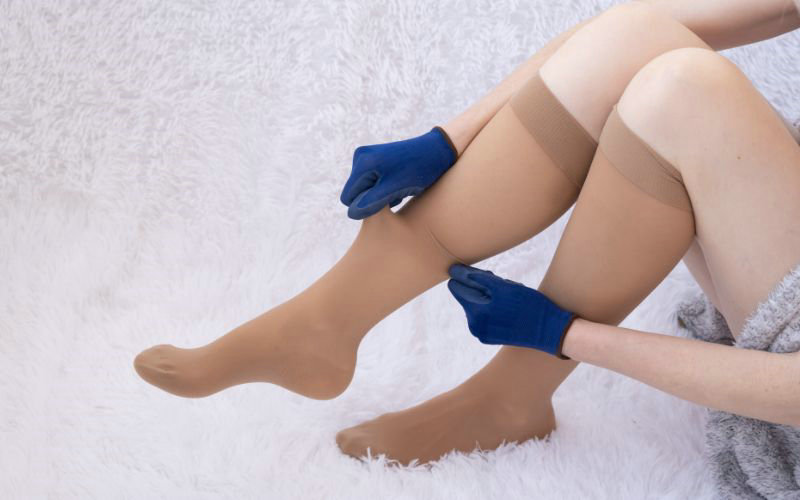
Selecting the appropriate compression socks is crucial for effectively managing varicose veins and improving leg circulation.
Types of Compression Socks
By Compression Level:
Mild (8-15 mmHg): For mildly aching or tired legs
Moderate (15-20 mmHg): For daily wear, travel, sports
Firm (20-30 mmHg): For medical conditions, sports recovery, swelling
Strong (30-40+ mmHg): For serious medical conditions like blood clots or severe swelling
By Length:
Ankle (invisible/no-show): For breathability with shoes/boots
Crew: Versatile everyday length
Knee-high: Common length for medical conditions
Thigh-high: When full leg compression is needed
Waist-high: Full leg compression including thighs
By Purpose:
Graduated compression: Tightest at ankle, pressure decreases up the leg – best for circulation
Anti-embolism: Helps prevent blood clots in immobile patients
Support/lifestyle: Light compression for tired legs or standing comfort
How to Choose the Right Compression Level?
The following factors will help you choose the right compression stockings.
| Compression Level | Purpose/Condition | Symptom Severity | Doctor Recommendation | Comfort/Tolerance |
|---|---|---|---|---|
| Mild (8-15 mmHg) | – General comfort – Mildly aching and tired legs – Support and comfort for standing/sitting long periods | Mild symptoms | Not required for general use | Start with a mild level |
| Moderate (15-20 mmHg) | – Daily wear – Travel – Mild medical issues like mild swelling, aching legs, enhanced circulation | Mild to moderate symptoms | Not required for general use | Start with a moderate level |
| Firm (20-30 mmHg) | – Treat medical conditions like poor circulation, swelling | Moderate symptoms | Doctor recommended for medical uses | Gradually increase if needed and tolerated |
| Strong (30-40+ mmHg) | – Severe issues like blood clots, chronic venous insufficiency, lymphedema | Severe symptoms | Doctor prescribed for severe medical conditions | Do not exceed your comfort level without doctor’s supervision |
In summary, match the compression level to your medical needs and symptom severity, with doctor guidance for medical uses. Mild (15-20 mmHg) works for general use, but medical conditions often need 20-30 mmHg or higher based on individual factors.

